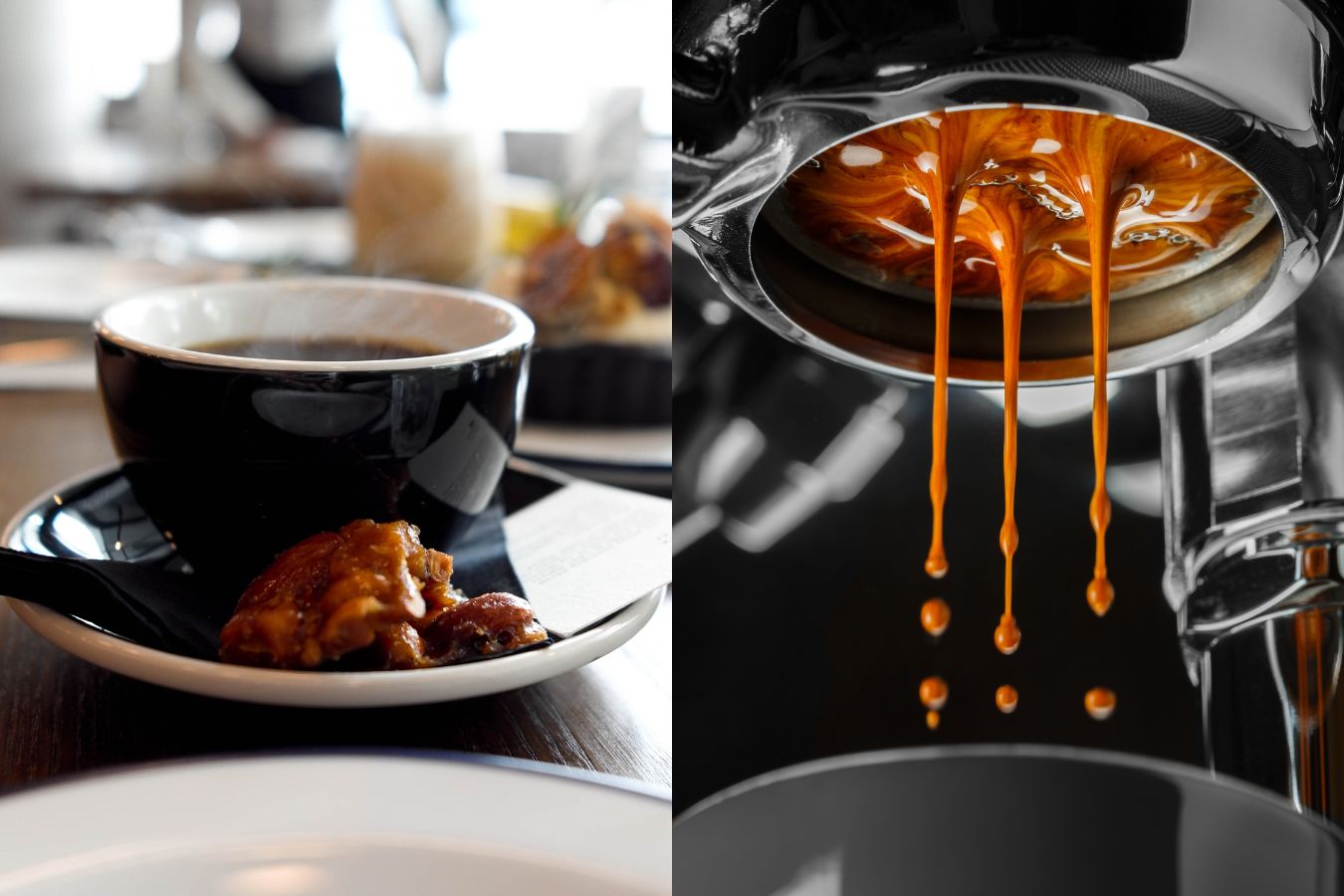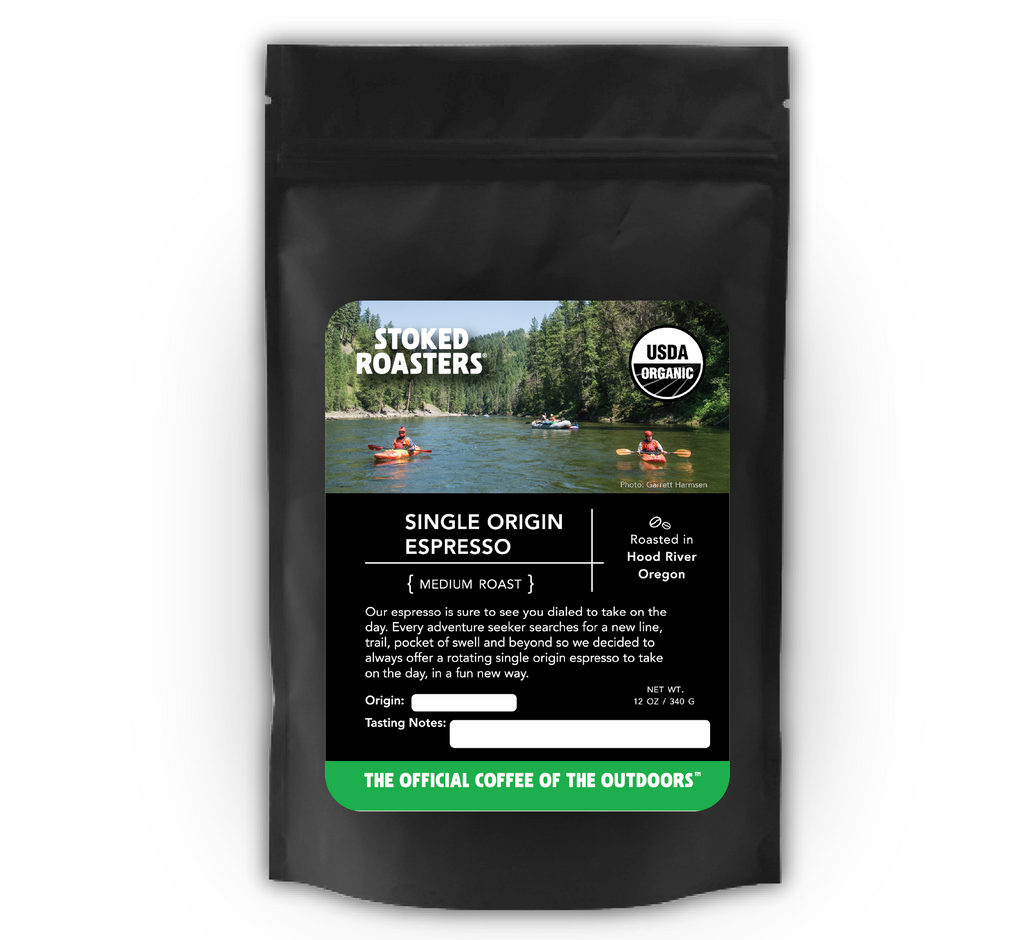Why Brew Lovers Prefer SOE Single Origin Espresso for Authenticity
Why Brew Lovers Prefer SOE Single Origin Espresso for Authenticity
Blog Article
Coffee Beans Uncovered: Uncovering the Secrets of Coffee and Blended Coffee Beans
When you think about coffee, what comes to mind? Is it the abundant scent of espresso or the complexity of a well-crafted mix? Comprehending the subtleties of coffee beans can change your experience. Each range, from Arabica to Robusta, holds its very own keys. As you discover additionally, you'll discover how these beans shape flavors and influence sustainability. What might you find concerning your next cup?
The Origins of Coffee: A Historic Viewpoint
Although espresso is now a staple in coffee society worldwide, its beginnings trace back to the very early 20th century in Italy. In 1901, Luigi Bezzera patented the initial espresso equipment, intending to make coffee faster than conventional approaches.
Understanding Coffee Beans: Selections and Attributes
When you believe regarding espresso, it's necessary to acknowledge the different bean selections and their distinct flavors. Each type brings a distinct character to your mug, affected by variables like roast degrees. Comprehending these elements can boost your coffee experience significantly.
Coffee Bean Varieties
As you check out the world of coffee, you'll swiftly find that not all beans are created equivalent; each variety brings its own distinct flavors and features to your cup. One of the most popular types consist of Arabica and Robusta. Arabica beans are known for their smooth, nuanced tastes and lower high levels of caffeine content, making them a favorite amongst coffee connoisseurs. On the other hand, Robusta beans pack a stronger strike with greater high levels of caffeine and a more bitter preference, usually favored in blends for their crema-enhancing high qualities. You may additionally come across specialized beans like Liberica and Excelsa, which use unique accounts and are less typical. Each range provides something different, so exploring will help you discover your best coffee.
Taste Accounts Discussed
Understanding the taste profiles of different espresso beans can elevate your coffee experience. Each bean variety uses distinct attributes that influence preference, mouthfeel, and scent. Arabica beans commonly provide a sweeter, a lot more complicated flavor with tips of fruit and floral notes, while Robusta beans often tend to be bolder, with earthy and nutty touches.
When you explore single-origin beans, you could uncover distinct local flavors-- Main American beans might be citrusy and brilliant, whereas Italian blends frequently supply rich, chocolatey notes.
Roast Levels Effect
Roast levels play a crucial duty in forming the taste and scent of coffee beans, influencing your overall coffee experience. Understanding these roast degrees aids you pick the coffee that fits your preference choices. Exploring with various roasts can lead to fascinating explorations, improving your gratitude for espresso.
The Art of Mixing: What Makes Blended Coffee Special
What makes blended coffee so interesting? It's everything about the art of combining beans from different beginnings, roast degrees, and taste profiles. When you blend, you're not just blending; you're producing a harmonious balance that highlights the strengths of each bean. You can try out various combinations to improve acidity, body, and sweet taste, leading to a mixture that's richer and extra complicated than a single-origin coffee.
Mixing also permits you to deal with diverse taste choices. You can craft a blend that's mellow and smooth or one that's strong and durable, relying on your audience. Plus, mixing can aid maintain uniformity, providing a reliable flavor experience despite seasonal variants in beans. Whether you're a barista or a home maker, grasping the art of mixing opens up a world of imagination and flavor possibilities, making your coffee experience genuinely special.
Taste Accounts: Tasting Notes of Coffee vs. Blended Coffee
Mixed coffee uses a globe of taste opportunities, but when it concerns coffee, you're checking out a more concentrated experience. Espresso generally showcases vibrant, abundant tastes with a thicker mouthfeel. You could discover notes of dark chocolate, sugar, or even hints of fruit, depending upon the beans. The strength can be both stimulating and satisfying.
On the various other hand, mixed coffee provides a complicated tapestry of tastes. You can discover a selection of tasting notes, from pleasant and nutty to floral and fruity. Each mix can supply something special, typically combining beans from different areas to create a well balanced profile.
While coffee delivers a strike, combined coffee welcomes you to savor the nuances. Whether you prefer the robust strength of coffee or the elaborate flavors of mixed coffee, each cup tells its very own story, waiting for you to uncover.
Brewing Techniques: Improving Your Espresso Shot
To accomplish the ideal coffee shot, understanding the brewing techniques is vital, as even minor adjustments can greatly influence the taste and high quality. Start by utilizing fresh, premium coffee beans; grind them simply before developing for maximum flavor. Go for a great work, regarding the consistency of common salt, to assure excellent removal.
Following, pay attention to your water temperature level; it needs to be between 195 ° F to 205 ° F. Too as well chilly or hot can ruin your shot. Usage about 18-20 grams of coffee for a dual shot, and tamp it equally with solid stress to produce a consistent puck.
A longer removal can lead to resentment, while also brief can result in sour tastes. Practice these strategies continually, and you'll improve your skills, accomplishing that rich, full-bodied espresso shot you yearn for.
The Role of Roast Levels in Coffee and Blended Coffee
After mastering the developing strategies for coffee, it's time to consider how roast levels influence the flavor account of your coffee. The roast level can significantly modify your coffee's preference, body, and scent. Light roasts have a tendency to highlight the coffee's origin, using intense level of acidity and fruity notes, while tool roasts equilibrium acidity and sweet taste, creating a well-shaped flavor. Dark roasts, on the other hand, highlight strong, abundant tastes with lower acidity, commonly creating chocolate or great smoky undertones.

Exploring Sustainability: Moral Sourcing of Coffee Beans
When you choose coffee, you're not simply selecting a taste; you're deciding concerning the effect on farmers and the setting. Understanding Fair Trade techniques, natural farming techniques, and accreditation criteria can assist you sustain lasting coffee sourcing. Let's check out exactly how these elements contribute to an extra honest coffee experience.
Fair Profession Practices
Fair Trade methods play an essential role in ensuring that coffee beans are sourced ethically and sustainably. When you choose Fair Trade coffee, you support farmers that obtain reasonable earnings and job in secure conditions. This commitment to honest sourcing helps fight destitution and advertises area growth in coffee-growing regions. You'll locate that Fair Trade certification also encourages eco-friendly farming methods, as manufacturers are incentivized to safeguard their land and resources. By choosing Fair Trade brands, you're not just taking pleasure in a rich mug of coffee; you're making a positive effect on the lives of those who grow it. Your selection matters, and it connects you to a worldwide movement concentrated on fairness and sustainability in the coffee market.
Natural Farming Approaches
As you check out the globe of honest coffee sourcing, natural farming methods become a vital component of sustainability. By choosing natural coffee, you sustain methods that focus on soil wellness, biodiversity, and all-natural ecological communities. Farmers stay clear of synthetic chemicals and plant foods, relying rather on all-natural garden compost and crop turning to improve soil fertility. This not only secures the atmosphere but also enhances the quality of the coffee you enjoy. Organic farming encourages local wild animals and promotes a balanced environment, minimizing the chances of condition and bugs. Additionally, it often results in stronger, healthier coffee plants, causing richer flavors in your mug. You're making an aware choice that profits both the earth and your palate. when you opt for organic coffee.
Accreditation Criteria Explained
Comprehending qualification criteria is important for anyone thinking about morally sourced coffee. These criteria, such as Fair Profession, Rain Forest Partnership, and USDA Organic, guarantee that coffee is grown under sustainable methods. When you select licensed coffee, you support farmers who abide by honest labor techniques and environmental protection.
Fair Trade qualification focuses on providing reasonable wages and functioning conditions, while Rainforest Partnership emphasizes biodiversity and ecological community preservation. USDA Organic assures that no synthetic plant foods or chemicals are utilized. By acquainting yourself with these accreditations, you can make enlightened choices that align with your worths. Following time you're at your regional café or grocery shop, search for these labels, and really feel great understanding your coffee acquisition favorably impacts communities and the atmosphere.
Often Asked Concerns


How Does Altitude Affect the Growth of Coffee Beans?
Elevation impacts coffee bean growth by influencing temperature level and environment. Higher elevations typically generate denser beans with even more complex flavors, while lower elevations can lead to faster growth yet less delicious results. You'll taste the distinction!
What's the Distinction Between Arabica and Robusta Beans?
Arabica beans are sweeter and much more intricate, while Robusta beans have a stronger, Single Origin Espresso harsher taste with higher caffeine web content. You'll find Arabica favored for specialty coffees, whereas Robusta's typically utilized in instant coffee and espresso blends.
Can Coffee Beans Go Bad or Shed Flavor Gradually?
Yes, coffee beans can go poor and shed taste with time. They'll become stagnant if you keep them improperly or keep them too long. Constantly keep your beans in a closed container far from light and wetness.
What Are the Health Conveniences of Drinking Espresso?
Consuming alcohol coffee increases your energy, improves mental clarity, and might reduce the danger of certain illness. It's rich in anti-oxidants, supports metabolic rate, and can enhance mood, making it a beneficial choice for your day-to-day routine.
Exactly How Does Water Top Quality Effect Espresso Removal?
Water quality significantly impacts coffee extraction. It impacts the solubility of tastes and oils, affecting taste and aroma. Making use of filtered water can enhance your espresso, making sure a balanced and delightful cup every time you brew.
Coffee Beans Uncovered: Uncovering the Keys of Coffee and Blended Coffee Beans.
Understanding the flavor profiles of various espresso beans can raise your coffee experience.Roast degrees play a crucial role in forming the taste and scent of coffee beans, influencing your total coffee experience (SOE).Combined coffee provides a globe of flavor opportunities, however when it comes to coffee, you're looking at a much more focused experience.After understanding the brewing methods for coffee, it's time to consider how roast levels influence the flavor profile of your coffee
Report this page